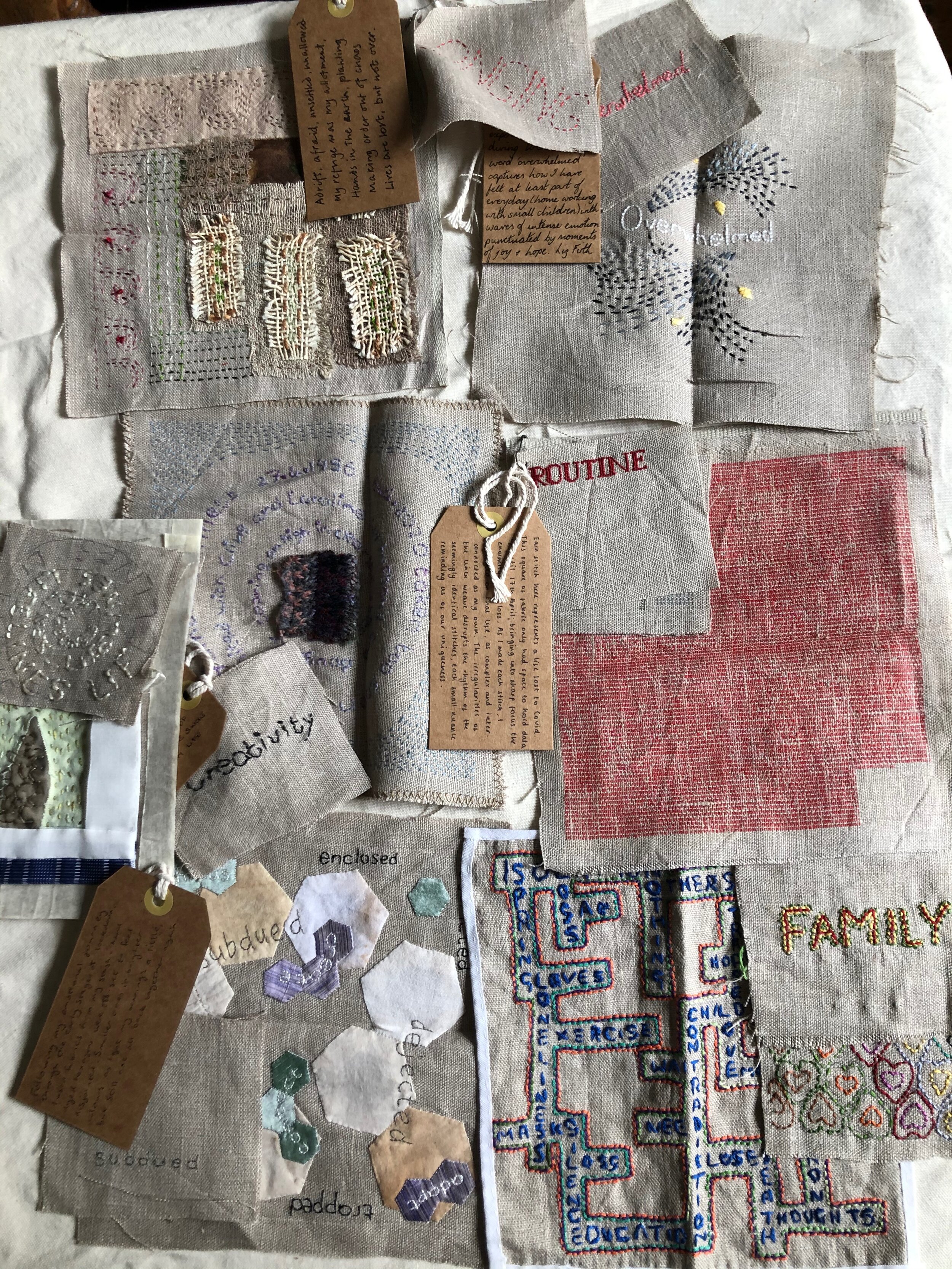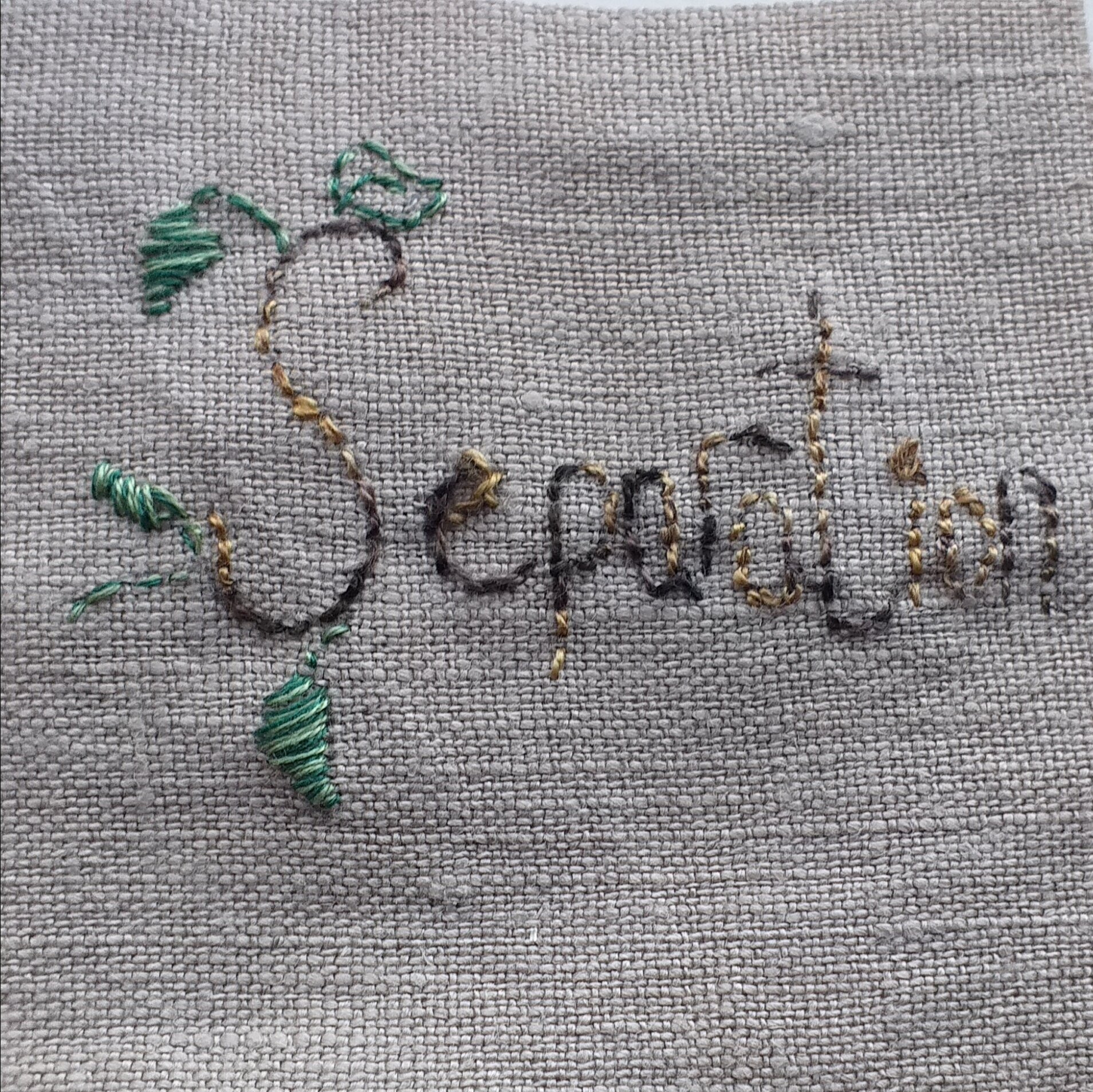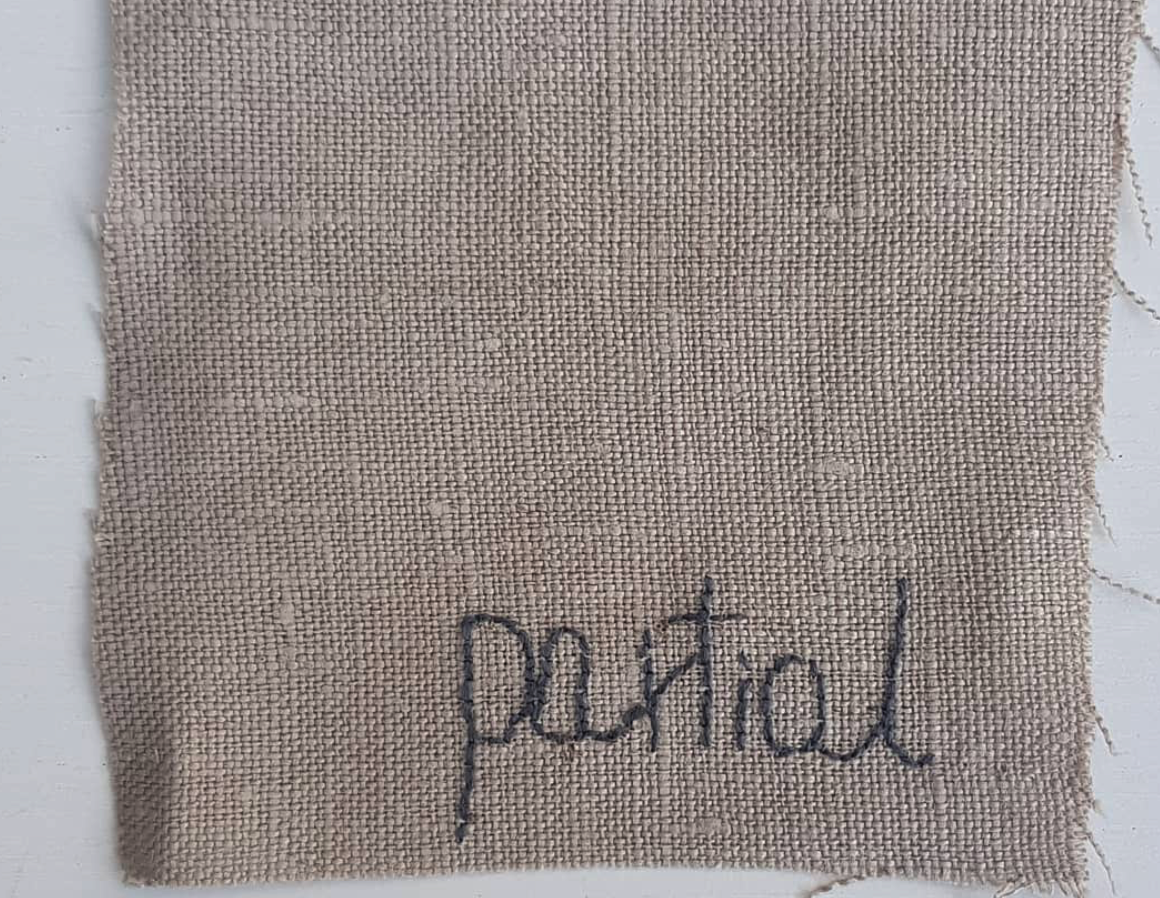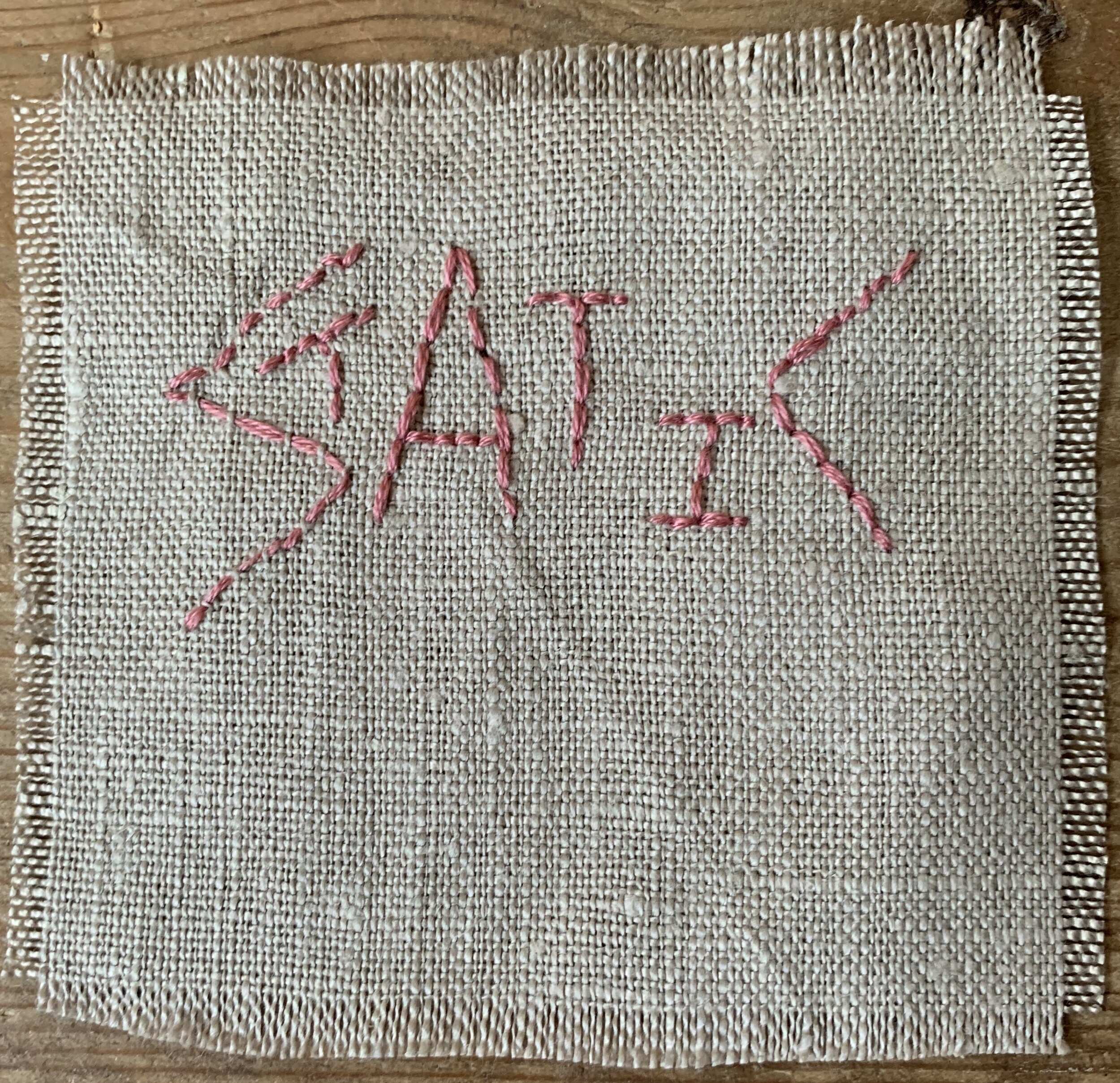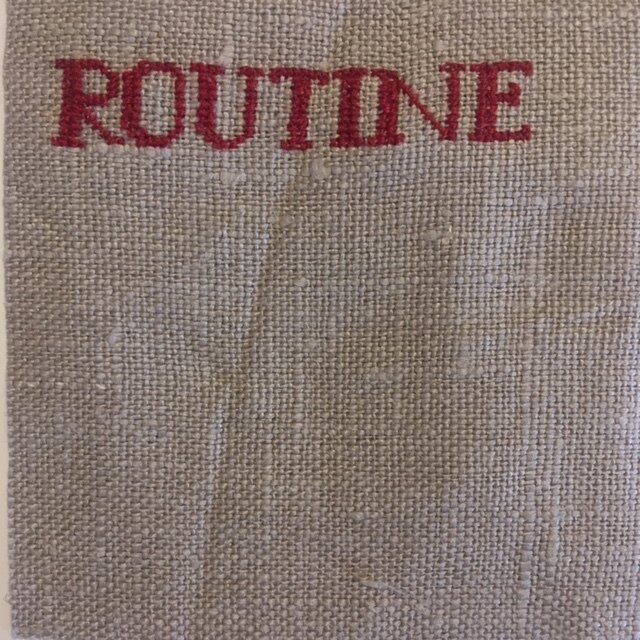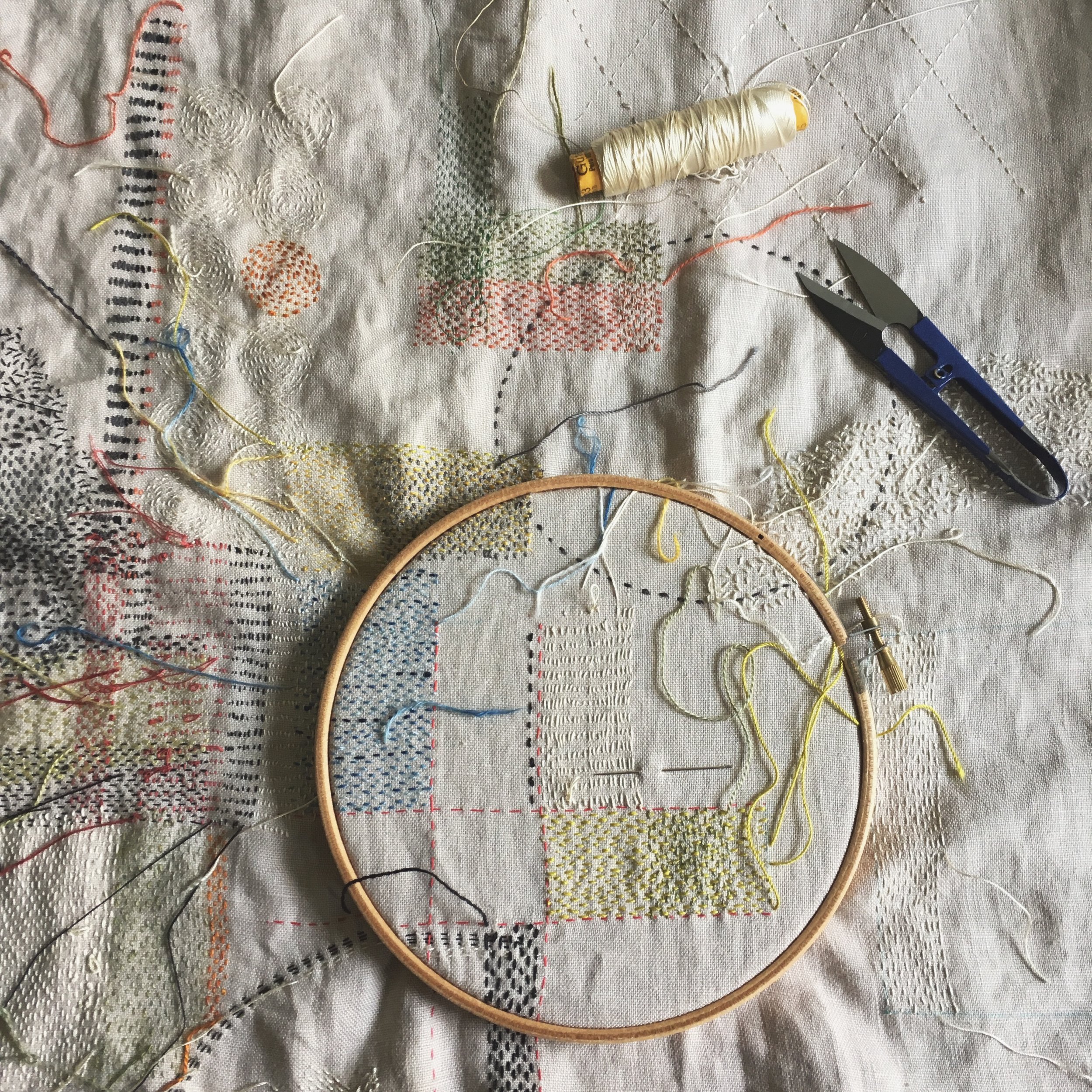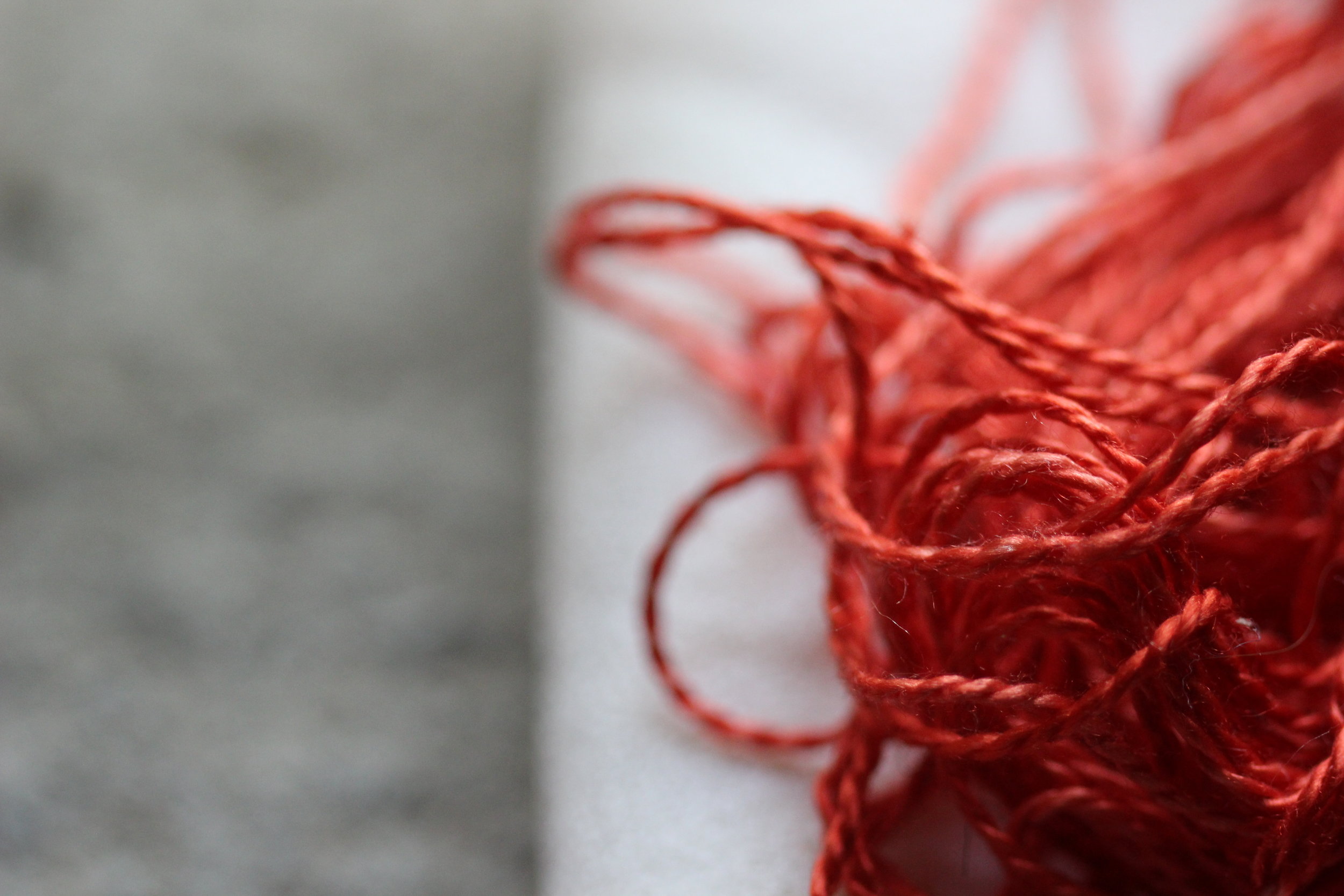The two groups involved in the Bradford Covid-19 Stitch Journal project met for the last time online this week and contributions have begun to arrive in the post. I found these meetings, and the descriptions of the textiles, a very emotional experience. This is summed up well by a participant who wrote ‘As a way to gain insight to how people were feeling during lockdown this was an incredibly powerful tool - far more revealing than interviews or small discussion groups I think. There were several times when I wanted to cry in response to what others were saying.’ Receiving the completed squares has offered me my first sight and touch of the textiles participants have made to reflect upon their experience of lockdown. The linen I supplied at the start of the project is very familiar to me as I use it in my own long-standing stitch journal. Finally handling the work gives me some sense of the process of making each participant has experienced, the pull of different weights of thread and the sensation of stitching one fabric to another. The group has also contributed a label of text to accompany their stitching. Once again I am struck by the many different experiences that people who live in a small geographical area have had of the Covid-19 crisis.
The UK went into full lockdown 100 days ago today and as I write many of the restrictions are beginning to lift. I am currently working out the best and safest way for the group to meet up in person. In the meantime I am taking photographs of the work together and apart and will post some more details here.
I am grateful for the support of Bradford Metropolitan District Council through a Response grant that has enabled this project.
